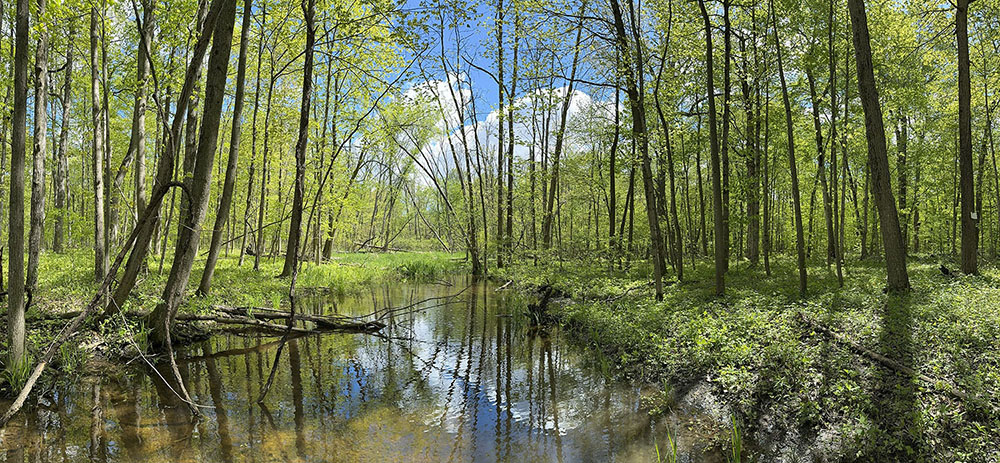
A Glorious—and Ephemeral—Spring Morning!
June 3, 2024 | Topics: Places, Stories
By Eddee Daniel
Where do you go to get your fix of spring wildflowers? Better catch them fast; spring in Wisconsin is as ephemeral as the flowers!
I’ve never seen so many wild woodland phlox in one place! The Caledonia Greenspace Trail was lined in their gently waving lavender glory as far as I could see down the straight line of its pathway. Generally, when I see such an extensive array of wildflowers they turn out to be an invasive species like dame’s rocket, which looks rudely similar to native phlox. But not this time. It was the first indication that I’d come at a good spring moment, but it was only the beginning!

The Greenspace Trail, a rails-to-trails conversion (hence its straight line), leads north from a small gravel parking lot at the dead end of Short Road. This rather unpoetically named road also inspired the name of the property owned and managed by Caledonia Conservancy, the Short Road Trailhead, that I was out to explore. After a few hundred yards another trail branched off, dropping down the former rail embankment into woodland. The only wildflowers I’d seen up to that point were the phlox. As lovely as they were, I was hoping for more….
I was not disappointed.
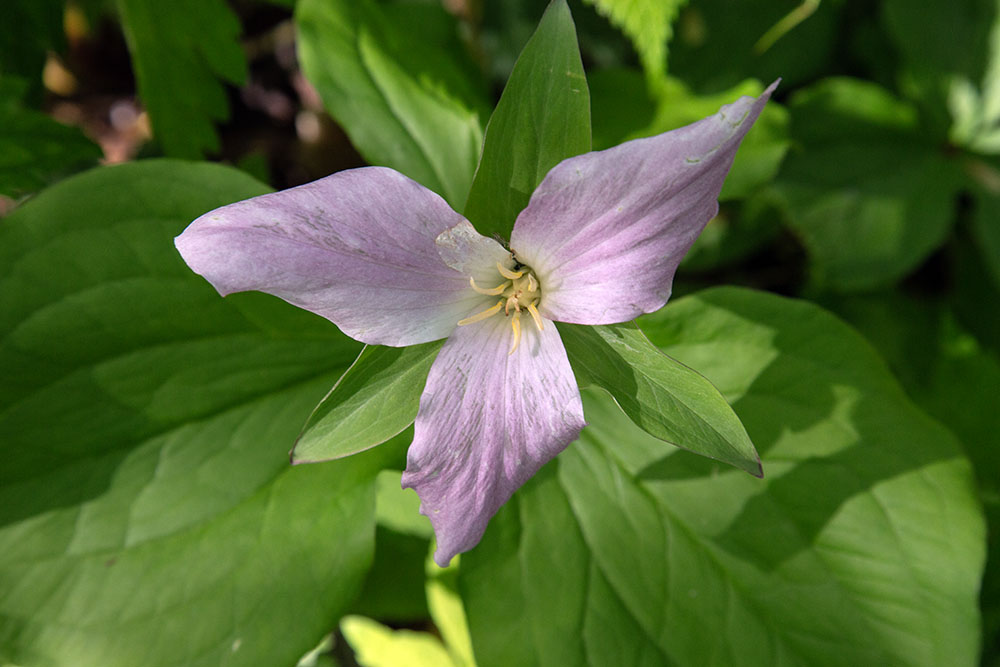
In fact, I’ve never been disappointed here in spring. It is one of my favorite places to go to find native ephemeral wildflowers in bloom, and to satisfy my cravings after the long Wisconsin winter. As soon as I stepped down the slope I began to see white trilliums, the gaudy and most common member of the trillium family in Wisconsin. Many of the aging blossoms were fading to pink, which they do before shriveling up entirely. But it wasn’t long before I came upon a small patch of the far more demure and rarer prairie (or red) trillium. These are easy to overlook if you aren’t paying close attention to the forest floor as you walk. They often blend in with the leaf litter—until you get up close!
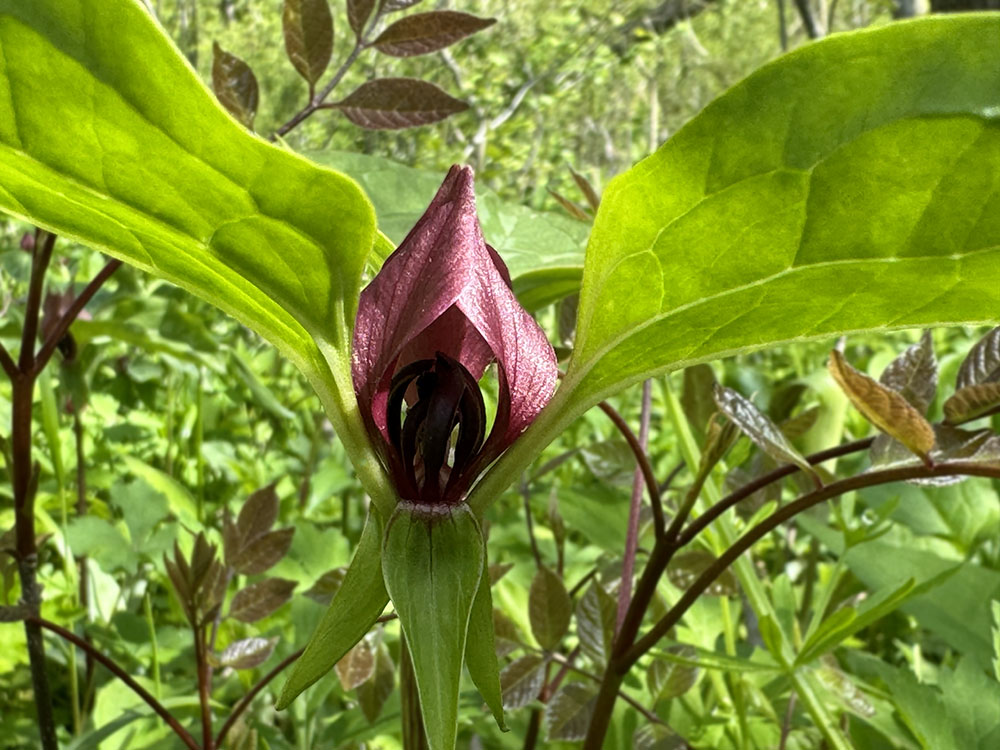
A couple of other flowers require even more effort to see clearly in all their splendor. (After all, they don’t bloom for our benefit, but for the pollinators that enable them to propagate their species!) Two in particular, Jack in the pulpit and mayapple blossoms, are not only low to the ground but also shaded by their leaves from our normally upright human vantage point. I found many Jacks in the pulpit, but had to lift quite a few mayapple leaves before I found one in bloom. Timing is everything, which is why they are called ephemeral! In another week, probably, the mayapples will come into their own.
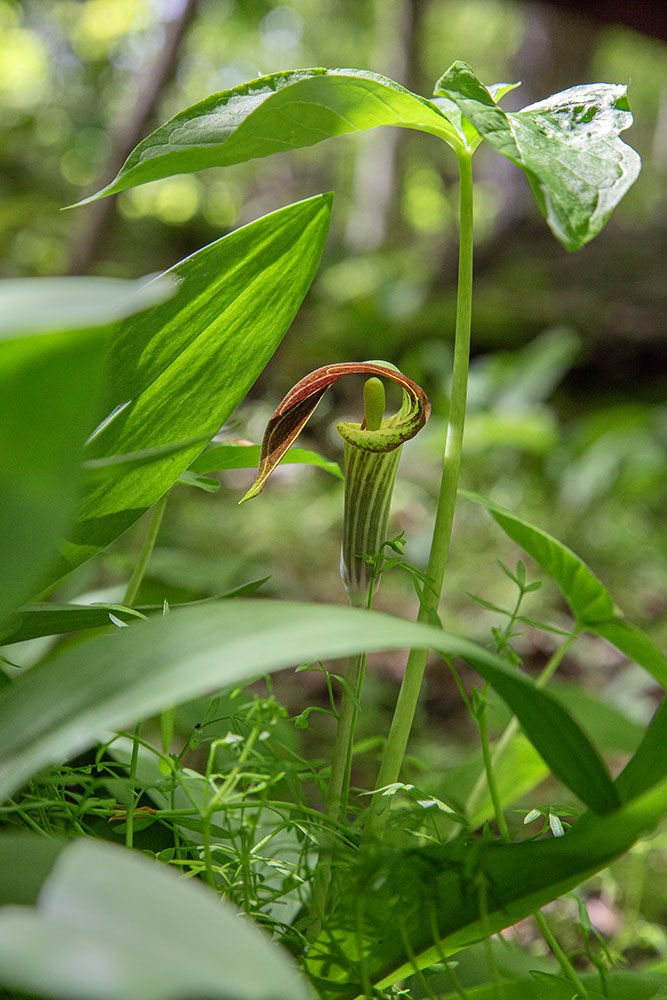
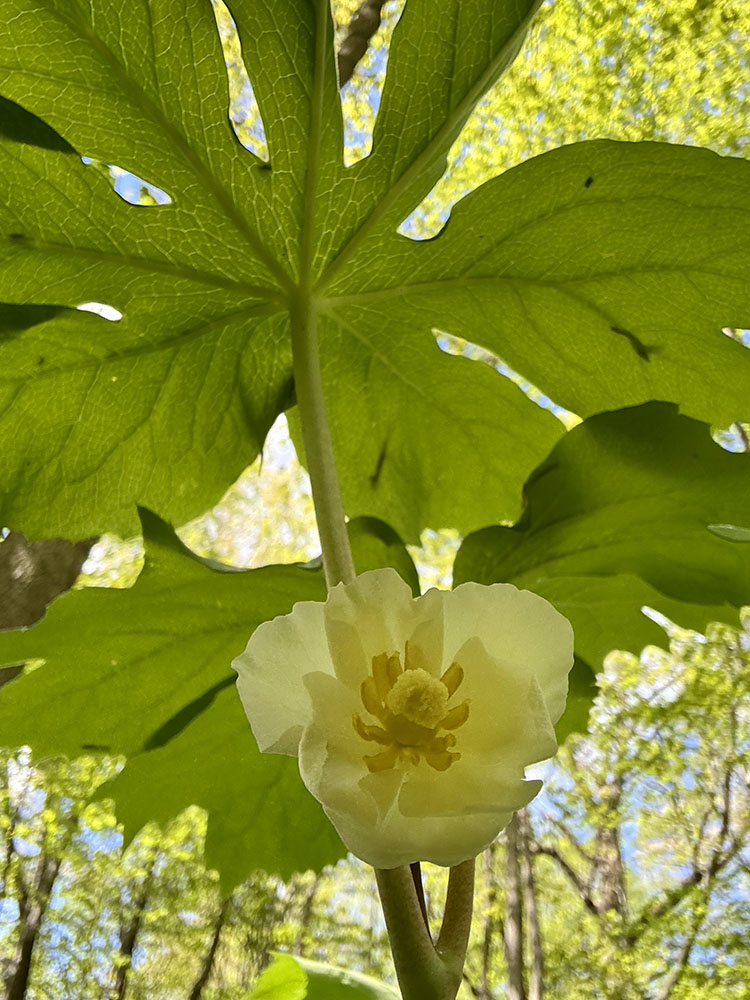
Deep in the woods I came upon a brand-new, rather grand-looking sign that I haven’t seen before, announcing the Lorence Family Woods. Nothing that I could make out distinguished the woodland behind the sign from that which I’d just walked through. An email inquiry to Caledonia Conservancy later assuaged my curiosity. This is a seven-acre parcel that was donated by the Lorence Family in 2023 and added to the existing 14.84-acre preserve. I walked a new loop trail there and found many more phlox, trilliums, Jacks in the pulpit and mayapples. A second loop is being planned, to be created this summer “if it ever dries out,” I was told.

I could immediately relate to that comment! Back on the original trail, right after completing the Lorence loop, I came upon a spot where the trail looked more like a pond. Fortuitously, having been here before in spring, I had come prepared. I was wearing my rubber boots instead of my usual hiking shoes, enabling me to wade right through.
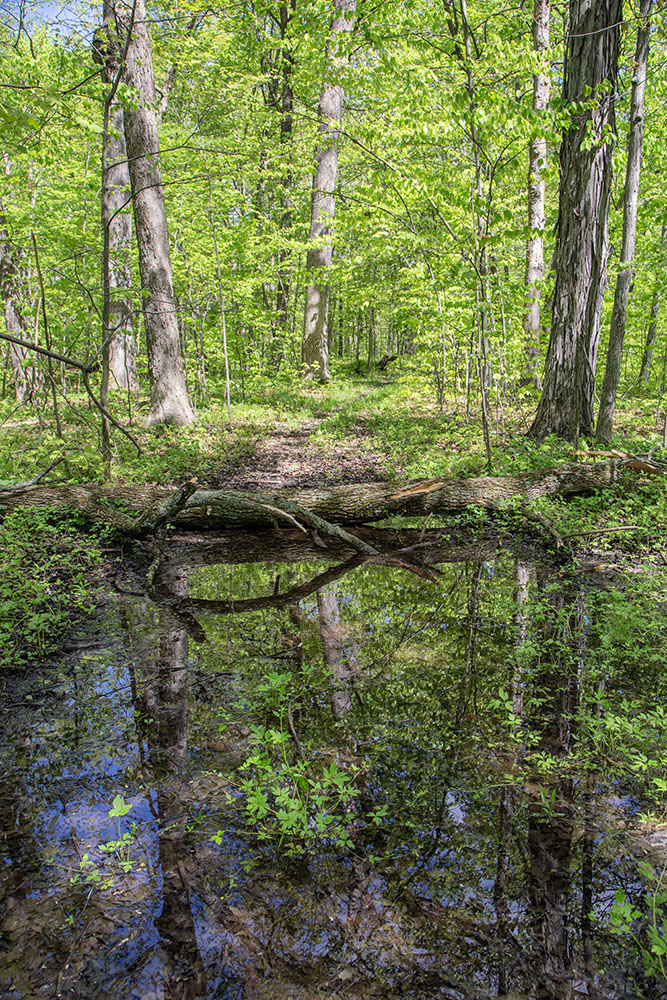
It wasn’t the only time the boots came in handy either. Attracted by a stream visible through the trees in the distance, I went off-trail, made my way to it. I shot the panorama at the beginning of this story from the middle of the shallow stream. At some point there I had most likely crossed an invisible boundary between the Short Road property and a larger one known as the Renak-Polak Beech-Maple Woods State Natural Area. Boundary lines make little sense in the middle of the woodland. The trees and the wildlife don’t make the distinction and neither can we when in the midst of it. As a rule of thumb, however, if you’re on a marked trail you can be pretty certain you’re on the Short Road Trailhead property. As befitting its designation, the State Natural Area is wilder with no developed trails.
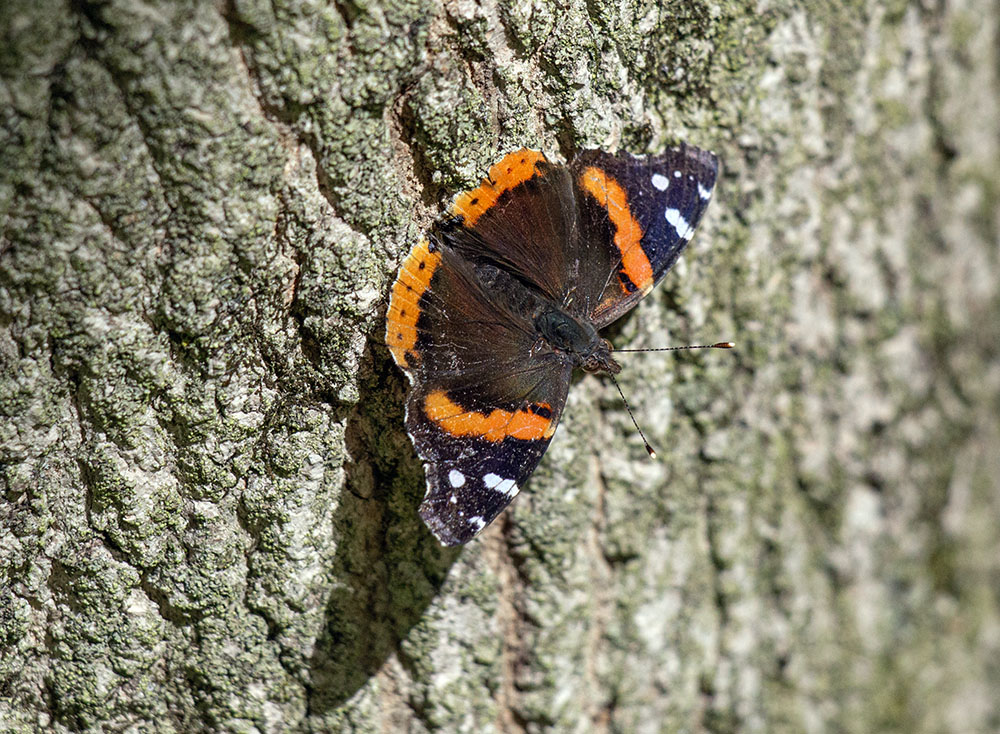

Quite a mouthful, the Renak-Polak Beech-Maple Woods State Natural Area is owned by the University of Wisconsin–Parkside. It gets its official State Natural Area designation from the Wisconsin DNR, which describes it on its website as “an outstanding southern mesic forest and a smaller acreage of wet-mesic forest located along an intermittent stream”—probably the one I found myself standing in the middle of! The forest “is dominated by sugar maple, basswood, and beech although the largest trees are red oak, sugar maple, and white ash.” Importantly, much of it is old growth.
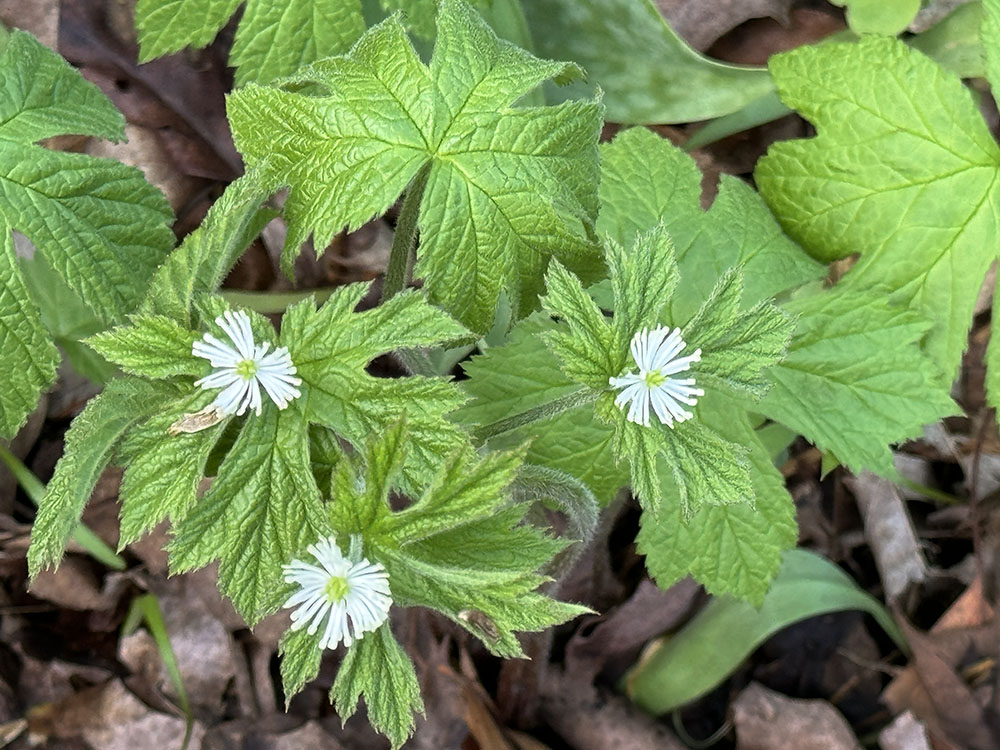
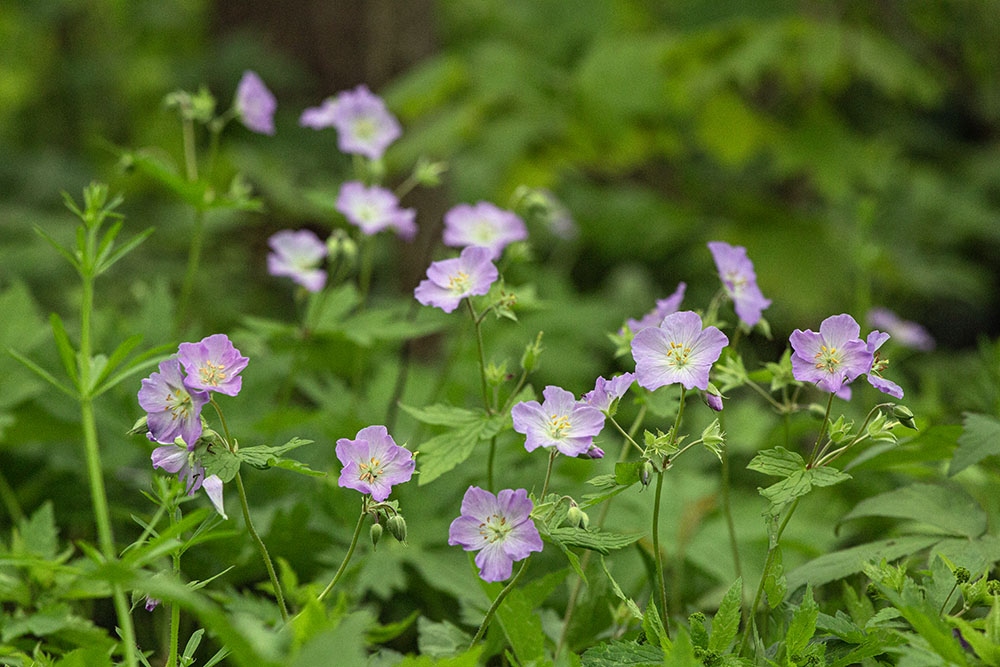
DNR descriptions tend to be dry, factual accounts. However, this one goes on to say that the woods “is noted for its spectacular display of spring wildflowers.” Duly noted. Along the stream I found plenty more phlox, along with wild geranium and a beautiful but tiny white flower that my iNaturalist app identified as goldenseal. The delicate flower rises erectly from a palmately-lobed leaf, which to my eye appeared as though it was being offered to me in the center of an upraised palm. On previous excursions, slightly earlier in the season, I’ve found others that—being ephemeral—have already disappeared this time, including wetland-loving buttercups and millions of spring beauties.

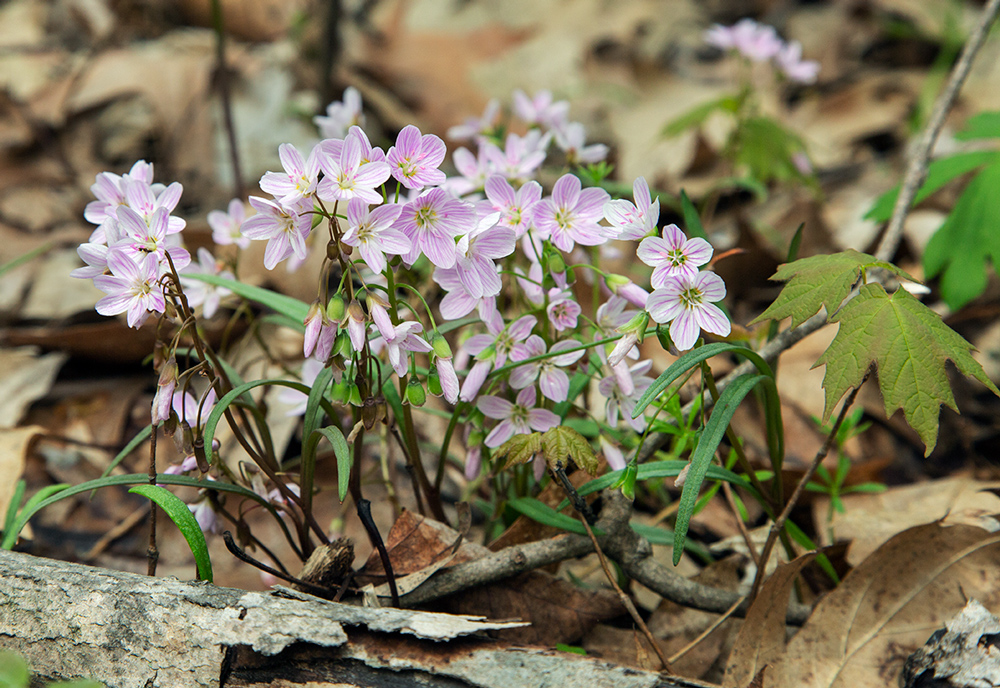
The wet condition of the forest has brought out more than flowers. Mushrooms are having a field day too. Some require the same kind of close attentiveness to find as the more minute flowers, but I came upon one pheasant back mushroom the size of a platter! Which, being edible, would make for a substantial meal. I left it in place, however.
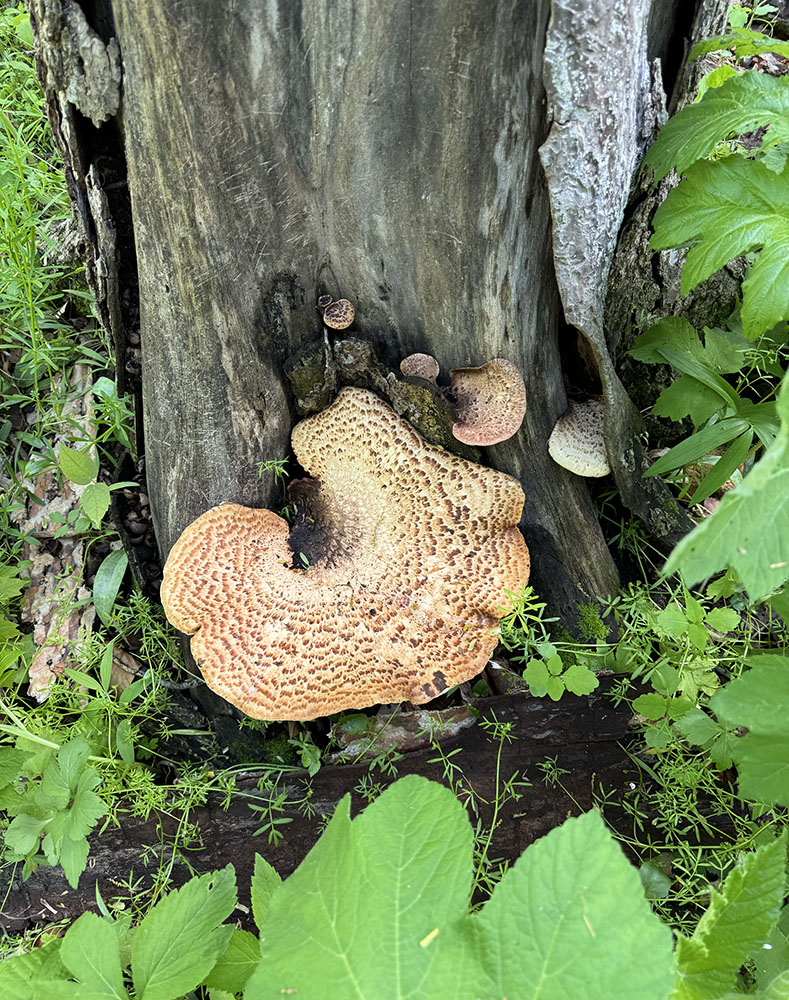
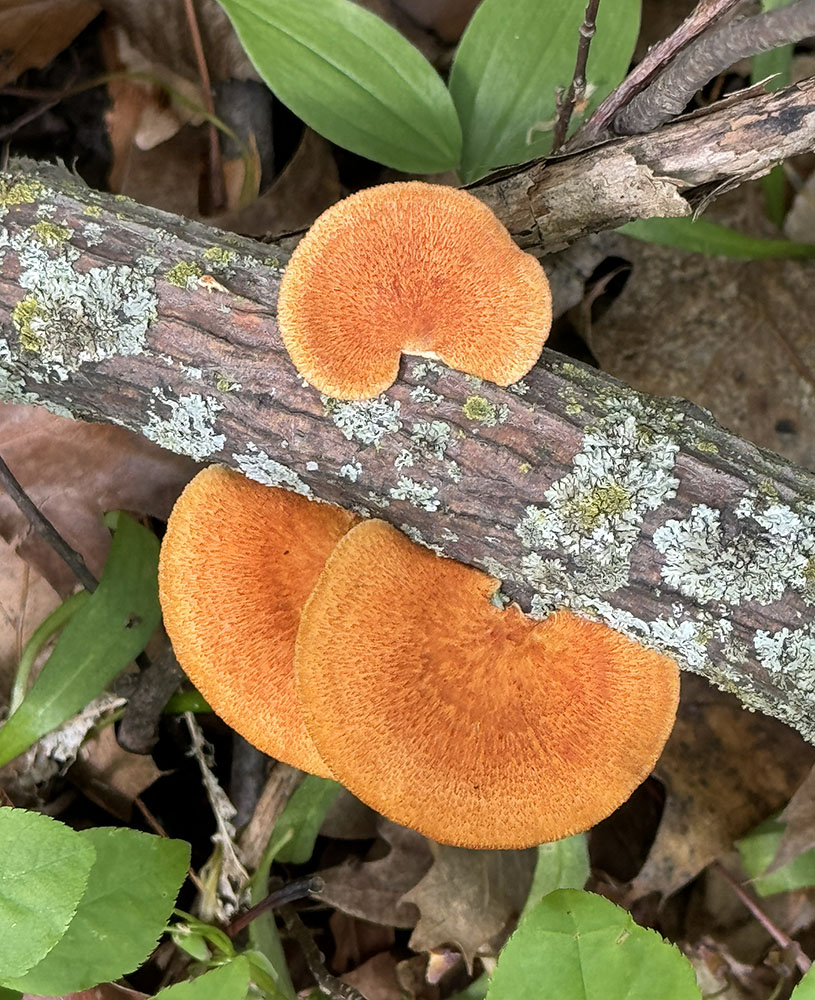
Thinking I’d made a good haul, so to speak, I headed back towards the Greenspace Trail. Luckily, I kept my eyes open anyway. Because you never know…. Sure enough, that’s when I caught sight of the most precious (to me at least) find of the day: a nodding trillium. These flowers look something like the showier white trillium, except that they bow to the forest floor. Hence “nodding.” It took a bit of genuflecting of my own to get the photo from a worm’s-eye view.

I was not done yet. Back on the Greenspace Trail I found, in addition to more phlox, quite a few nice patches of richly-hued wood violets, Wisconsin’s official state flower; a fitting finale. I didn’t see anyone else the whole time, but if you decide to go there, watch for people on horseback. The Greenspace Trail and many of the trails in the Short Road Trailhead preserve are intended for both pedestrian and equestrian use. But, be forewarned, by the time you read this, the ephemeral flowers will have been true to their name. Maybe next year!
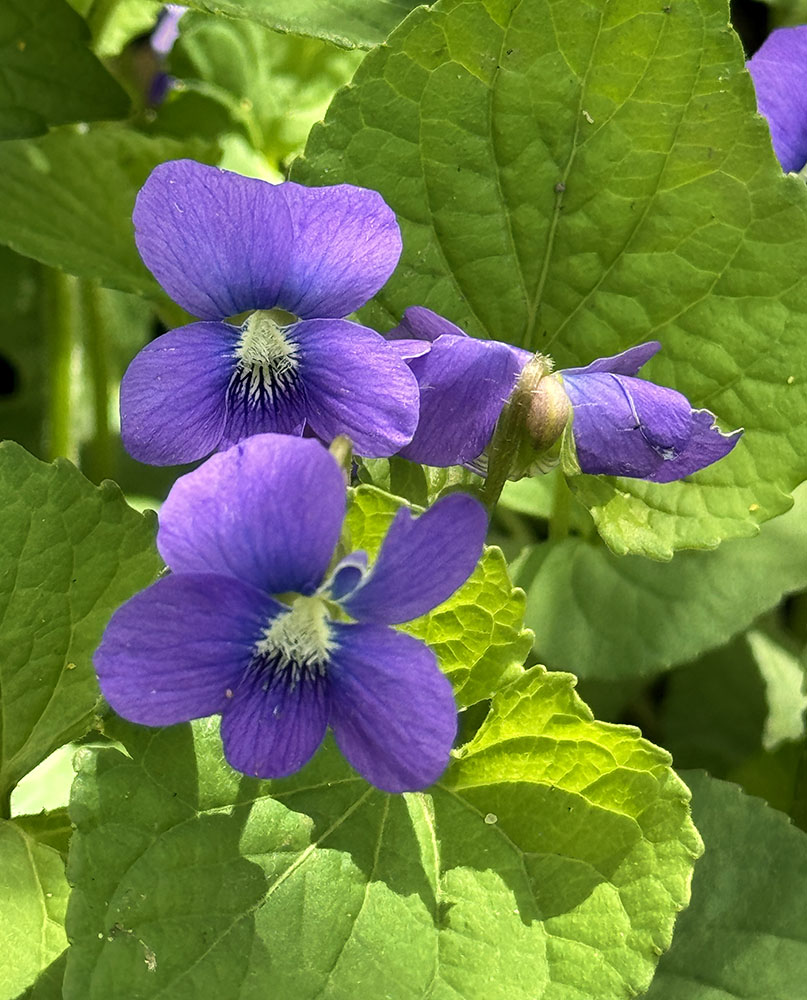
For more information about Short Road Trailhead and Renak-Polak Beech-Maple Woods State Natural Area go to our Find-a-Park page.
Related stories:
Spring wildflowers
A spring bouquet of wildflowers!
The Importance of the “Wild” in Wildflowers!
12 “Awards” for Spring Wildflowers and Wildlife in the Milwaukee Area
Ephemeral ponds
Vernal and Ephemeral: These Ponds Are Essential Habitats!
Short Road Trailhead
The Mane Event: Touring nature preserves on horseback!
Coping with COVID: Meetings and distances
Eddee Daniel is a board member of Preserve Our Parks. Caledonia Conservancy is a project partner of A Wealth of Nature.
3 thoughts on "A Glorious—and Ephemeral—Spring Morning!"
Comments are closed.


Eddee, your photo’s are stunning.
Sheryl
Thank you Eddie for sharing all of your beautiful photos and information. I look forward to all of your postings. What a beautiful state we live in! Peg McGuire
I live near Jackson Park & the KK Parkway Forked Aster Trail in Milwaukee. It’s an area that once was part of [Billy] Mitchell Woods. I am proud to report that we see most of these ephemerals, and I have many of them now growing in my naturalized landscape. They are “volunteers” including Blood Root brought in by wildlife that I welcome into my urban plot. I provide the National Wildlife Federation certified Habitat elements: food, water, cover and places to raise young. Also no pesticides!